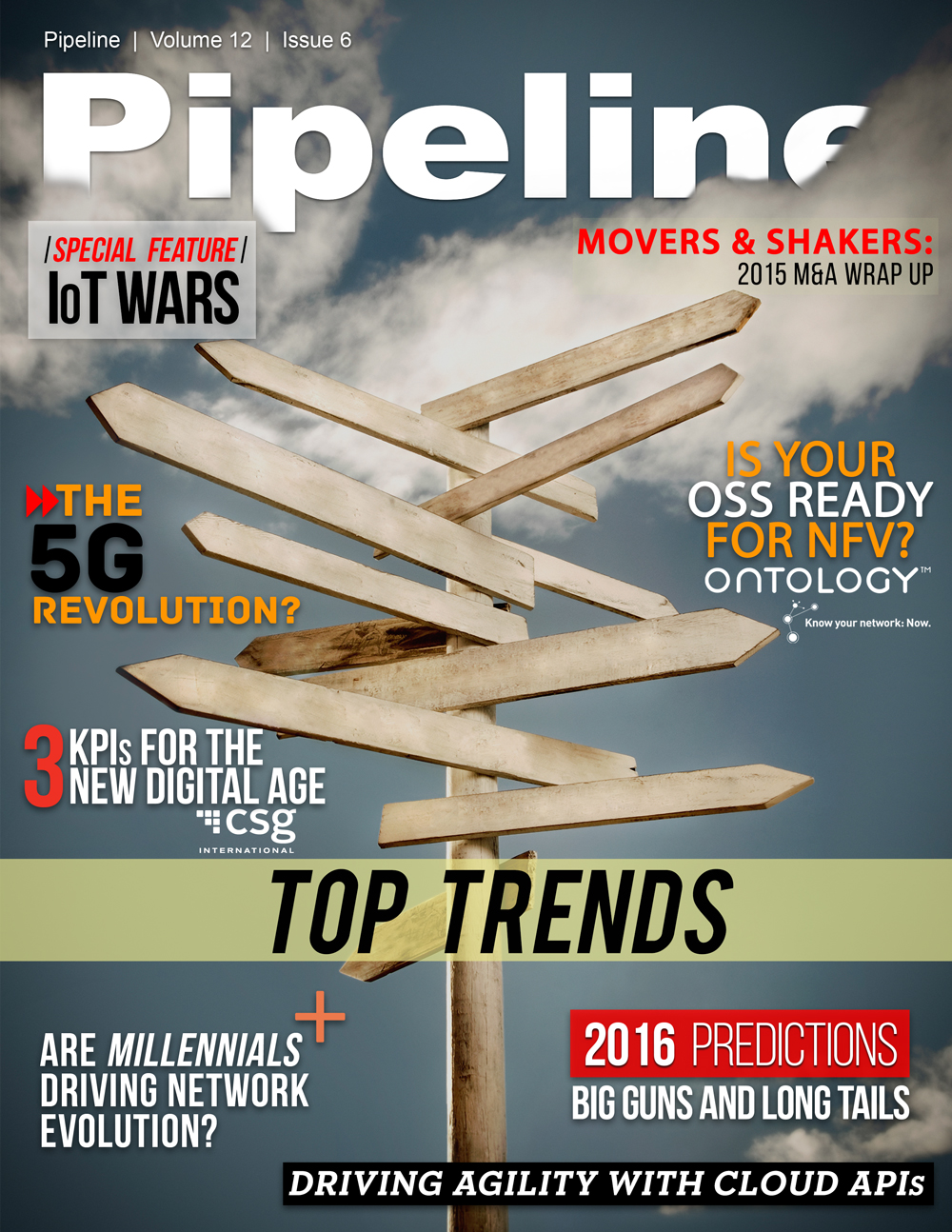Monthly News Digest - December 2015
According to the report, North America remained dominant with a 47.5 percent of the LTE market share. The regions with the next highest market share rankings are Western Europe at 19 percent and Oceania, Eastern and South-Eastern Asia at 16.25 percent. Despite North America’s coverage and market share dominance, the highest growth rate was actually generated by Latin America, which saw a 324 percent increase year-over-year for a total of 22.5 million subscriptions. Still, LTE has plenty of room to grow, as it accounts for only 3 percent of the market share in Latin America and the Caribbean where GSM (54 percent) and HSPA (41 percent) remain the dominant players.
That high growth rate for telecom services in Latin America was reflected in the explosive expansion of global wholesale voice mobile and capacity services provider BICS’s voice business in the region. The wholesale carrier claims to have doubled its voice service in the Caribbean, and South and Central America within the last two years. BICS views the area markets with huge potential and as one of its key focuses in the coming year, as a growing number of operators look to provide next generation connectivity and a globalized virtual footprint to customers both in their domestic and international markets.
Closer to home, DE-CIX New York claims to have surpassed its goals and connected one hundred customer networks in New York City’s fastest growing Internet exchange providing neutral peering and interconnection services. In just 18 months the company has developed a distributed carrier and data-center-neutral Internet exchange that provides more than 100 access points to its exchange from the most relevant data centers around the region.
Likewise, Atlanta-based Birch Communications announced it had recently completed metro fiber network connections to 80 thousand new customers in 22 states, posing a serious threat to T&T and Comcast. Birch’s nationwide IP-Network now spans 44 major markets in 22 states and is comprised of 31,000 route-miles of fiber and more than 600 points of presence (POPs).
That boost in broadband and 4G LTE services has been propelled by skyrocketing smartphone and mobile data use. According to a new report by Transparency Market Research, increasing smartphone and 4G LTE use is also driving up the demand for more mobile apps which, in turn, is causing carriers to start eyeing app development as a valuable revenue generator in direct competition with “over-the-top” (OTT) app developers. This is resulting in a booming global telecom API market that would enable carriers to more quickly and easily develop their own value-added mobile apps.
The report expects the global telecom API market to grow a robust 24 percent annually for the next 7 years as growing numbers of smartphone users switch to 4G LTE networks for mobile Internet access. That growth translates into a international API market worth almost $323 billion by 2022. In contrast, the U.S. market for telecom APIs was worth just under $56 billion in 2014.
With all those smart devices on the market and consumer demand growing every day, increasing pressure is being brought on LTE and LTE-A service technology and its performance. However, according to Frost & Sullivan analysis announced this month, the complexity and high performance of LTE-compatible mobile devices is helping drive up the cost of LTE test equipment and limiting profits. The report recommends that increasing collaboration among chipset vendors and test equipment companies will lower testing costs and help LTE testing vendors.
As demand grows for high-speed, ultra-broadband access in busy public locations, Alcatel-Lucent is introducing a new wideband low power LTE interface card to lower power consumption and operational costs of providing better public access to that type of high performance service. The new interface card removes the need for bulky radio technology in public installations, along with the large space and cooling equipment required.
All this interest in broadband is drawing the attention of the FCC, which announced this month in a joint memorandum with the FTC that it may start keeping an eye on broadband service. In the memorandum, the two federal commissions outlined ongoing consumer protection against abusive telemarketing tactics and privacy issues, signaling a possible expansion of enforcement activities into broadband.
But wait! There’s more….
To read more news stories, be sure to check our Pipeline’s real-time news center and subscribe to Pipeline’s weekly and month newsletters.
To have your company’s news included in our coverage, send your press releases to pressreleases@pipelinepub.com for consideration.


















